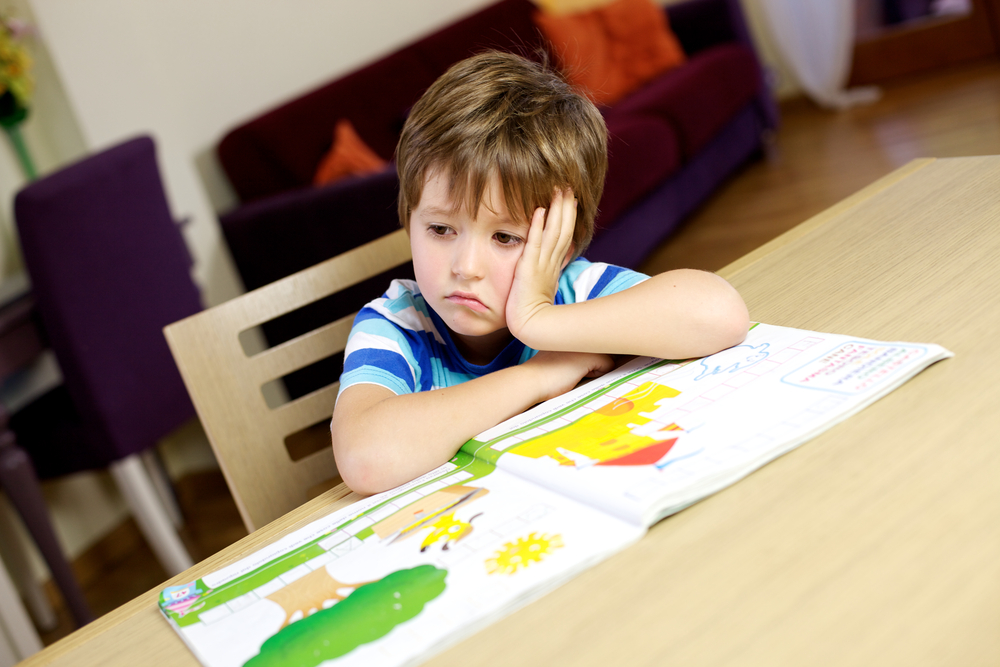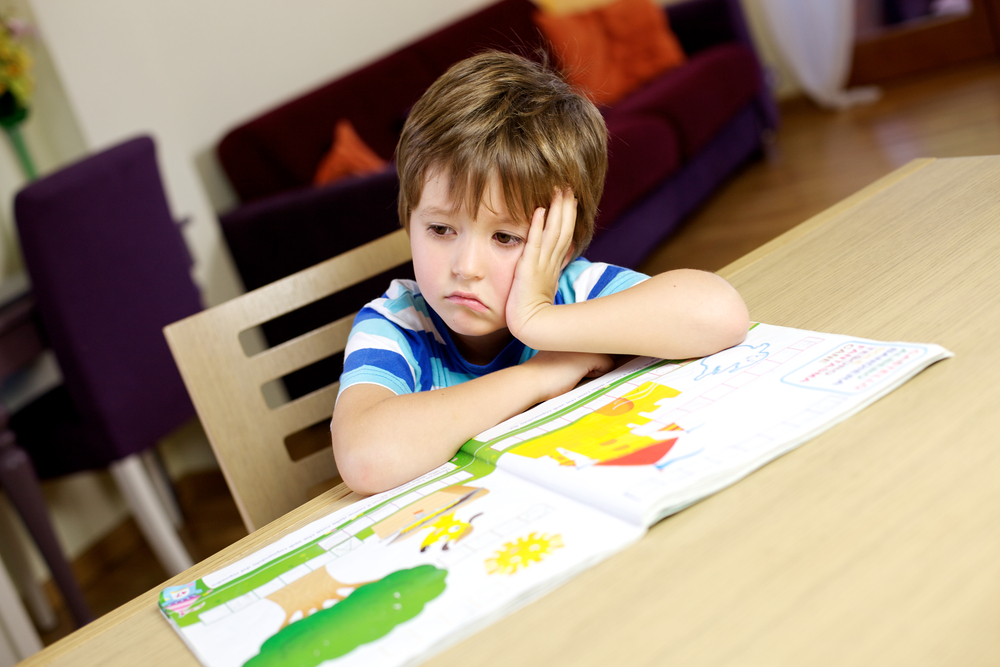Has your child ever thrown a tantrum or had a complete meltdown in the middle of a store? If you’re like most parents, the answer is — Yes! Instead of trying to bribe them with toys, chocolate, or ice cream, try calming strategies for kids.
In this article, we’ll share the most effective ways to help your child (and you) manage their strong emotions better. Let’s get started.
Why Are Calming Strategies For Kids Important?

First things first: our goal is not to help you prevent your child from ever getting upset. That would be unrealistic. Instead, we want to help you learn how to teach your child strategies for working through their feelings.
Why should you be worried about this? Isn’t throwing tantrums a normal part of growing up?
While meltdowns do happen, it’s important for children to learn there are better options for dealing with stress that can help them express themselves more effectively.
Additionally, it takes time for kids to learn how to successfully deal with their emotions. Some people struggle with this well into adulthood. The more kids practice effective coping techniques from an early age, the better prepared they will be for adulthood challenges.
Emotional Intelligence
Being able to calm yourself down is also an integral part of self-regulation, an important component of emotional intelligence.
There are many incredible benefits to developing emotional intelligence, including improved mental health, better management of relationships, and the ability to deal with difficult circumstances in a healthy manner.
Early Signs Of A Stressed Child

We’ve spoken a little about tantrums already, but just because your child isn’t having meltdowns doesn’t mean that they are not experiencing stress and distress. Kids handle difficult situations differently.
Your child might bottle things up, and it may not be easy to spot that something isn’t right until they explode one day.
In order to prevent this, it’s essential to look out for early warning signs. When you spot these early enough, you can see that your child may be going through something challenging and take steps to help.
Here are some things to watch for:
- A dramatic difference in your child’s attitude
- Withdrawal from family and friends
- Reluctance to go to school or participate in activities they used to enjoy
- Disruptive behavior
- A change in appetite
- Difficulty sleeping
Keep in mind that you don’t have to wait for the above signs to act. Sometimes, your parental instincts are your best guide.
Consider what may be going on in your child’s life — a divorce, moving schools, family death, and a new sibling are just some of the events that can trigger stress in children.
Calming Strategies For Kids

As highlighted above (and as you likely already know), kids are different and will respond in varying ways to the below strategies. A technique that works for your eldest may not be very effective for your youngest. Even for the same child, what works this week might not in a month.
Now, let’s get started.
1) Practice Deep Breathing
If you’ve ever been stressed before, you’ve probably heard from a loved one the words, “Just breathe.” Why is that?
In a nutshell, when you are experiencing feelings of anxiety, stress, or anger, your breathing is likely to get shallow. Your heart rate will also increase and your muscles will tense up. It’s difficult to think clearly or act soundly when you’re in this state.
Deep breathing helps increase the oxygen flow that our bodies and brains need. This can be an effective stress-relieving technique for people of all ages, not just kids!
Here are some fun ways to encourage your child to give it a try:
- “Breathe in through your nose like you’re smelling a flower. Hold for three seconds. And then breathe out through your mouth like you’re trying to blow out your birthday candles.”
- “Raise your hands and take a deep breath in through your nose. Hold for one hippopotamus, two hippopotamus, three hippopotamus. Let your hands down slowly as you breathe out through your mouth.”
Repeat these breathing exercises at least four times. You may even want to try meditation for kids.
2) Create A Calm, Safe Spot

Using a designated quiet spot can be an effective calming strategy for kids of all ages to help them cope with stress. Even adults need a quiet place to go sometimes!
This special spot will help give your child a place they can retreat to when they are feeling overwhelmed.
Start by finding any area around your home that’s away from a lot of noise. You can add their favorite stuffed animal or blanket to make it really comfortable and inviting. You might also consider having a calming object or two in this space, like a stress ball or fidget spinner.
After setting up the spot, invite your child to it and explain how and when they can use it.
The next time you sense their feelings or emotions starting to get out of control, calmly remind your child about their spot. They can then head to this calming place for as long as they need to.
3) Read A Book About Emotions
Books are a great way to help your child learn to cope with stress, whether you’re reading aloud to them or they’re reading on their own.
Here are some incredible stories to help your young learner better understand and manage their emotions:
- When Sophie Gets Angry — Really, Really Angry
- Angry Octopus
- In My Heart: A Book Of Feelings
- The Color Monster: A Story About Emotions
- Find Your Calm
- Ruby Finds a Worry
4) Help Your Child Express What They Need

Oftentimes, older kids simply need to talk to someone. The challenging part here is how you respond to what they tell you.
Remember to stay calm throughout the conversation and listen attentively. When it’s your turn to speak, ask questions that encourage them to process the situation further.
Doing this regularly can help your child learn how to express their feelings while letting them know that they can always turn to you when they need to talk.
5) Create A Feelings Vine
Creating a feelings vine can be a great alternative for younger children who haven’t yet learned how to verbalize their emotions.
What You Need:
- This printable
- Scissors
- Washi tape or string
How It Works:
Tape the washi tape or a long string to a wall to create a “vine.” Color and cut out the leaves from the printable with your child and then stick them onto the vine.
Discuss with your child the emotions that each leaf represents. To add a little bit of fun to this teachable moment, you might ask your child to demonstrate the emotions by making silly, exaggerated faces.
Here are more details on how to create this simple but effective strategy at home.
6) Get Active

Moving your body is a great way to help release stress and tension. That’s why any form of exercise can be an effective strategy for both younger and older kids.
If they’ve been indoors and playing video games or watching TV all day, encourage them to go play outside — take a walk, go jogging, kick a ball, play with the dog, ride their bike, etc.
Changing the scenery while getting active can be a very effective calming strategy for kids.
7) Encourage Sensory Play
Sometimes, it’s difficult for kids to express their thoughts when they’re upset, especially when they are feeling lots of different emotions.
Sensory play can be an effective way for children (especially younger ones) to calm down by allowing them to focus on one sense at a time.
Here are some ideas you can try at home.
Create A Feelings Box
Place different types of materials (feather, leather, cotton balls, etc.) in a shoebox. Then ask your child to close their eyes, feel inside the box, and guess what’s in it.
Play Calming Music
Calming music can provide stress relief and lessen feelings of anxiousness in children. We recommend creating a soothing playlist, giving your child some headphones, and letting them sit and listen to the music as long as they’d like.
Color Mixing
This activity engages a few different senses and helps your child discover what happens when certain colors mix. It can be a great way for them to forget about what’s upsetting them and focus on the fun activity in front of them.
Here are more details!
8) Repeat Positive Affirmations
One of the best ways to get rid of negative thoughts is to replace them with positive thoughts. This can be a great strategy for older kids whose vocabulary is more advanced than younger children’s.
Help your child come up with simple affirmations that they can repeat over and over again, such as:
- I am strong
- I am smart
- I can do anything I put my mind to
- I am special
Remember That Stress Is A Part of Life

In an ideal world, we would be able to get rid of all the stress, anxiety, and difficult situations that our kids face.
But this ideal world is far-fetched from reality. Unfortunately, we can’t do anything to stop our kids from facing challenges. The best we can do is help them navigate these obstacles.
Apply the above calming strategies for kids and help your child learn some effective ways to deal with this thing called life.
For more ideas on creating fun activities at home for kids check out our HOMER Activities!
,


